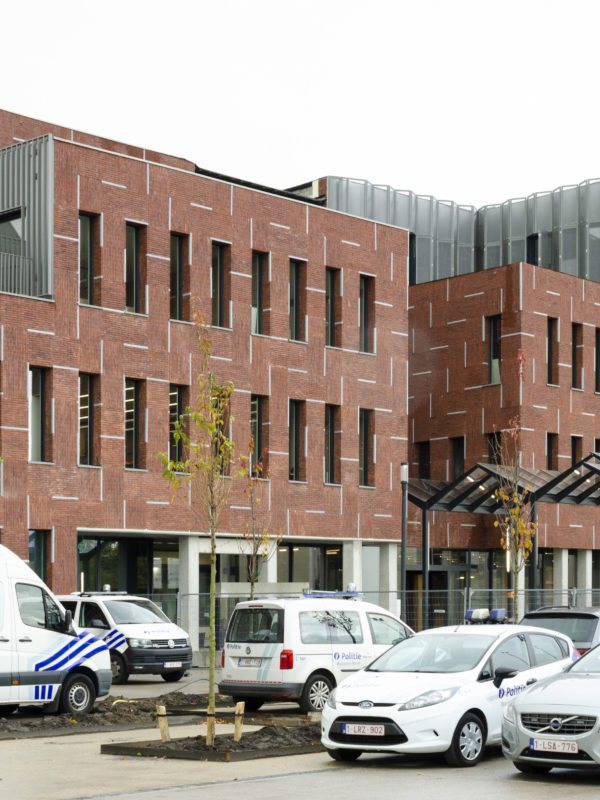Beveren Police Station and Civic Center
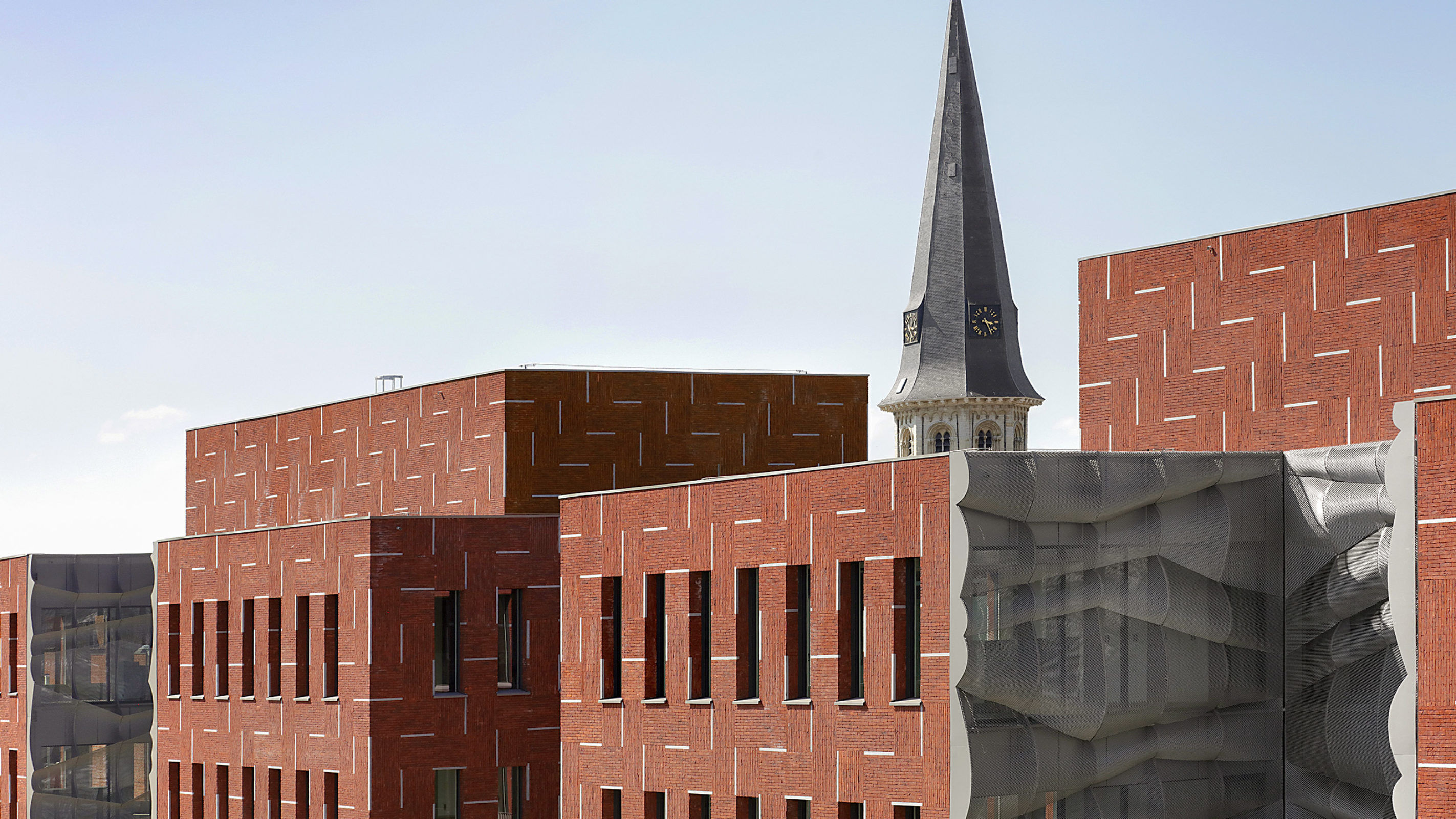
The Beveren Civic Center is located on the central artery in the heart of the City of Beveren, twenty minutes west of Antwerp. The project serves as a new central municipal administration building containing all city hall departments, public service administration, and the police headquarters. The police station and city hall departments are each housed on one leg of an L-shaped building. At the junction of both is an entry volume, which contains the representative functions of the civic center that includes an assembly hall, public auditorium and public “service market”. The entry façade opens onto and helps define a new civic square.
The multiple functionalities housed in one volume necessitated the design for a carefully designed, large-scale complex in order to meet the specific needs of each function in a unified structure. In order to keep the building accessible and welcoming, the large volume has been organized into nested, interlocking scales. As a result each portion of the building meets the internal social functions of the building while it's exterior related conscientiously with the surrounding urban landscape.
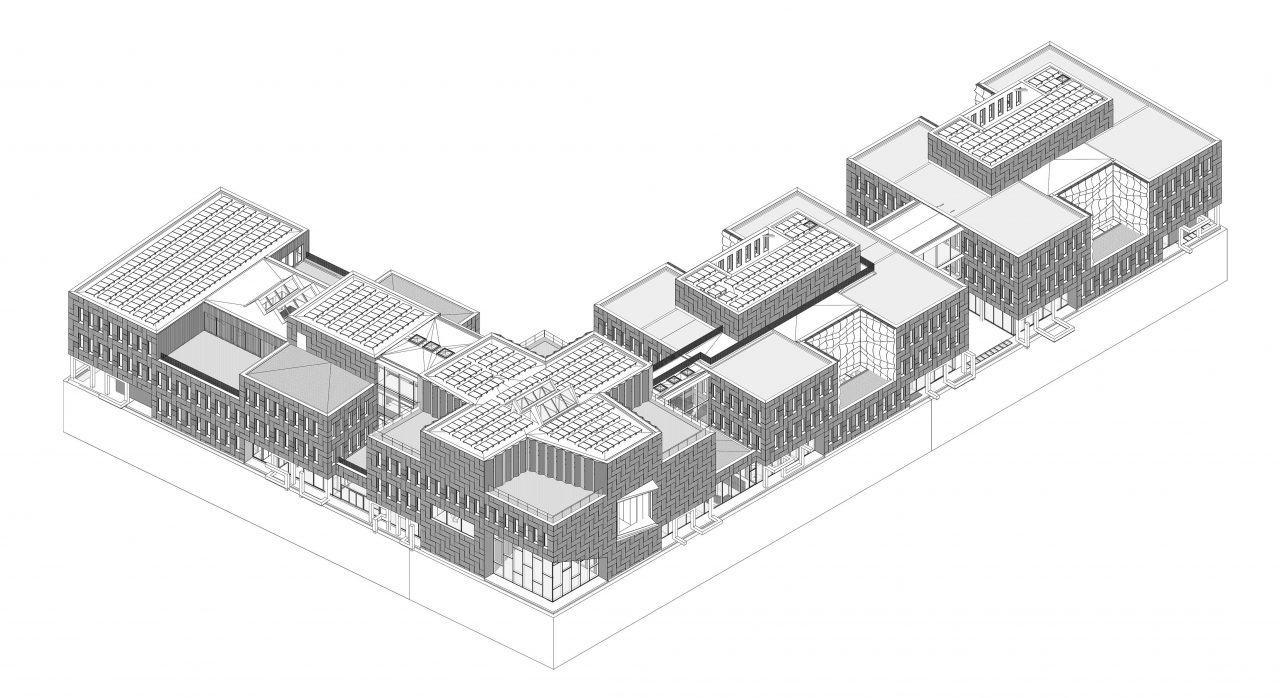
The building is simple and well-ordered. The “mega-brick” cladding responds to the local context – a traditional building material applied in a non-traditional way. Regularly spaced, vertical windows fit into the mega brick system allowing predictable light to enter the flexible internal office layouts. Stretched metal (mesh wall) clad void spaces between each volume, and contrast the rational brick façade. These voids define courtyards, bring daylight deep into each floor plan, modulate solar energy gain, as well as create functional outdoor spaces. Transparent connectors between the main volumes contain all the vertical circulation and common meeting areas.
The building is a low-energy building, nearly carbon neutral. Much of the energy savings come from passive solar, wind and water strategies; as well as active heating, cooling and energy technologies such as borehole thermal energy storage, chilled ceiling systems for low-temperature heating and cooling, solar panels on the roof and integrated solar cells in the glazed parking canopies.
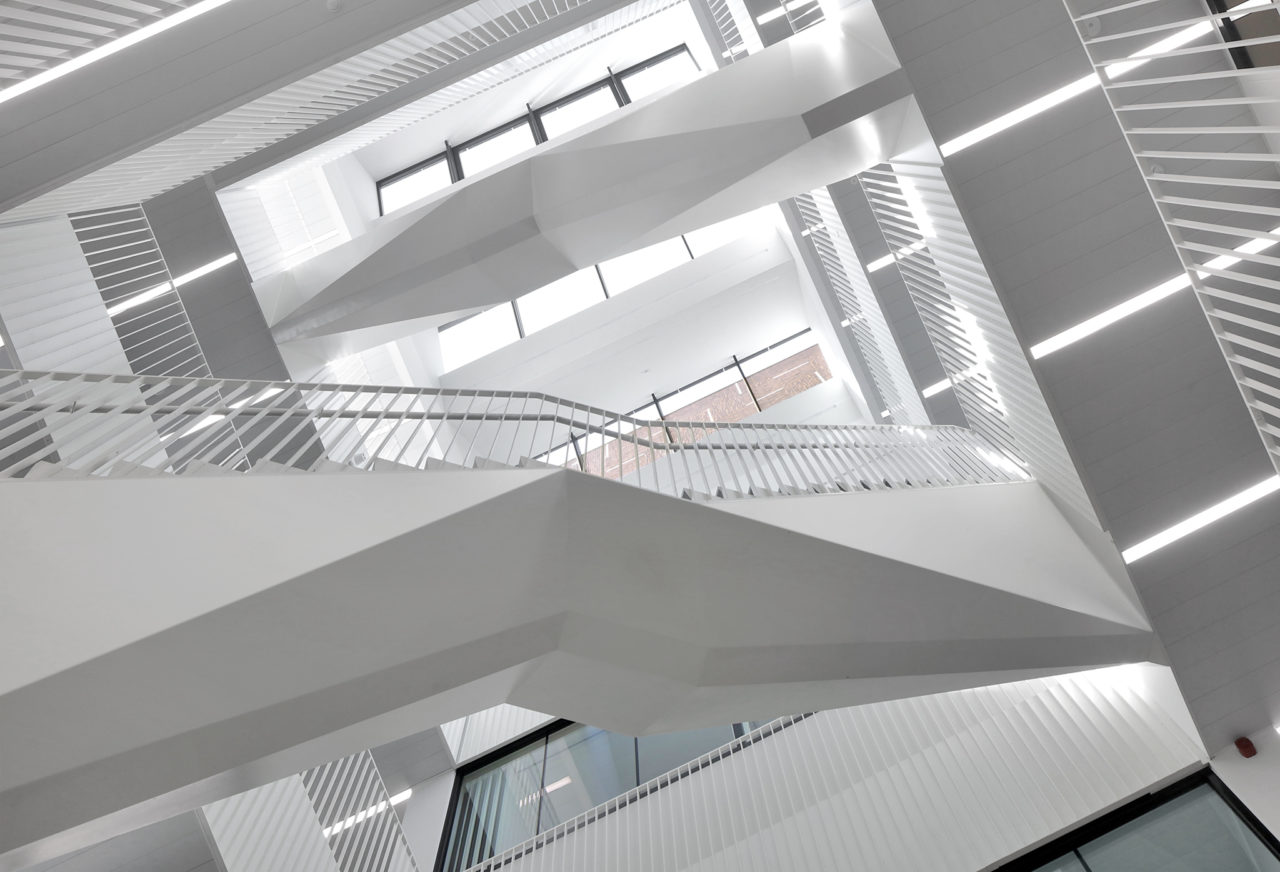
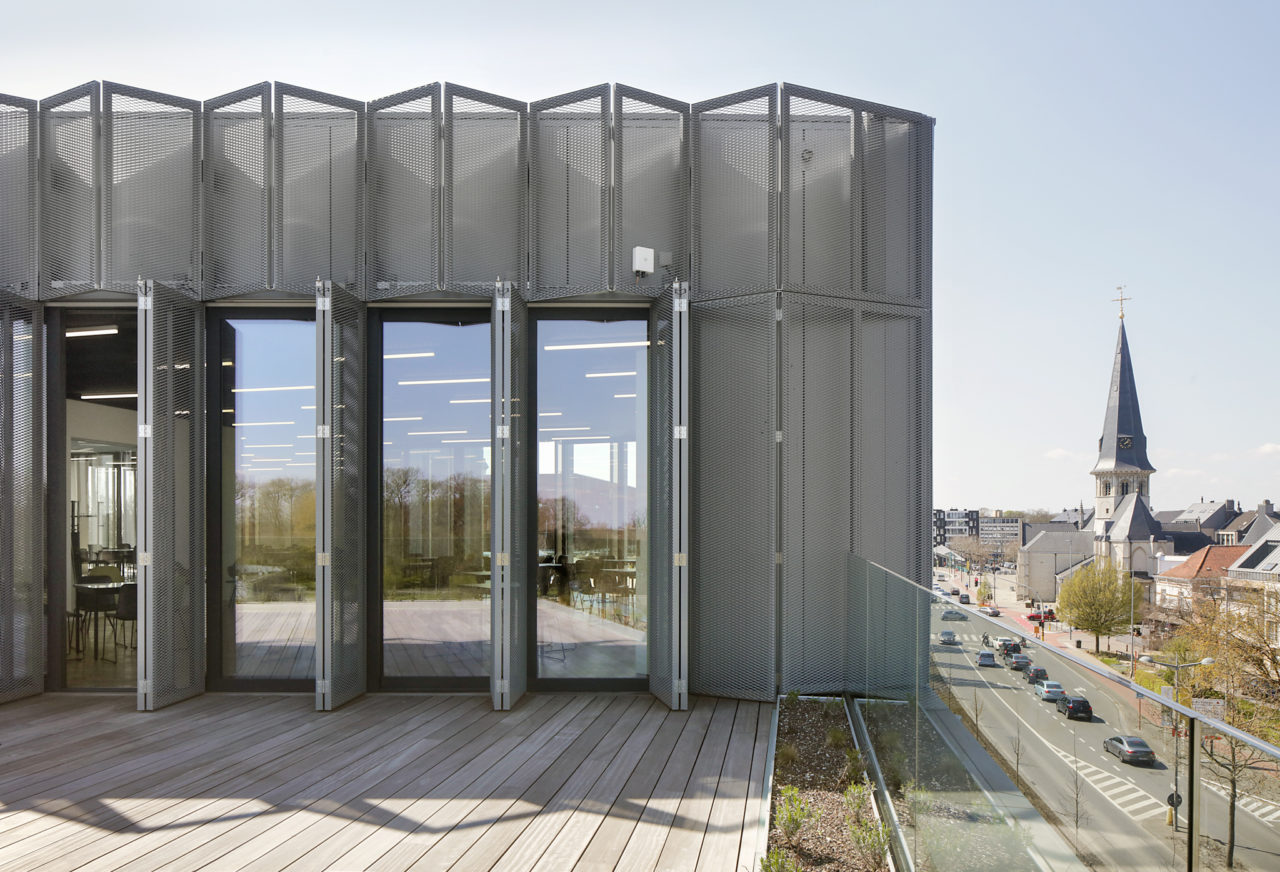
ELEMENTS - MESH WALL
The Mesh-wall is a façade prototype for a solar shade. The prototype was designed for the Beveren Civic Center courtyards. The prototype’s intelligence is to combine functional requirements: limit solar energy and water exposure, while at the same time allow diffuse light to enter the building interior and permit views to the outside.
The uniqueness of the mesh-wall shape is the product of analog and digital design techniques. A computer solar study was performed on the courtyards, isolating critical solar movements and energy parameters. These variables were noted, and then many formal solutions were explored in clay using ceramic tools. The most promising clay models were 3d scanned, imported into modeling software, and geometrically refined and broken into construction units. The models were inserted into a building information model (BIM) and again analyzed to ensure functional performance and integration with the building as a whole. Design specifications were sent to a steel fabricator and structural engineer. Full-scale mock-ups were built to check and perfect material size assumptions, and study construction and installation techniques.
Stretched metal panels are partly bent to shape before fully formed and welded to structural steel plate profiles. The pre-fabricated mesh walls are then bolted to steel brackets pre-cast into the concrete floor slabs. Concave shapes are used at the Southern courtyards, sized to block critical solar angles. The form, originally inspired by a fabric curtain oriented horizontally, forces light to pass through each panel undulation more than once, thereby minimizing direct heat gain. Convex shapes are used at the Northern courtyards to create a shadow effect even without direct sunlight. Steel is economically utilized by cutting convex and concave shapes out of one typically dimensioned metal sheet.
ELEMENTS - SOL LEWITT
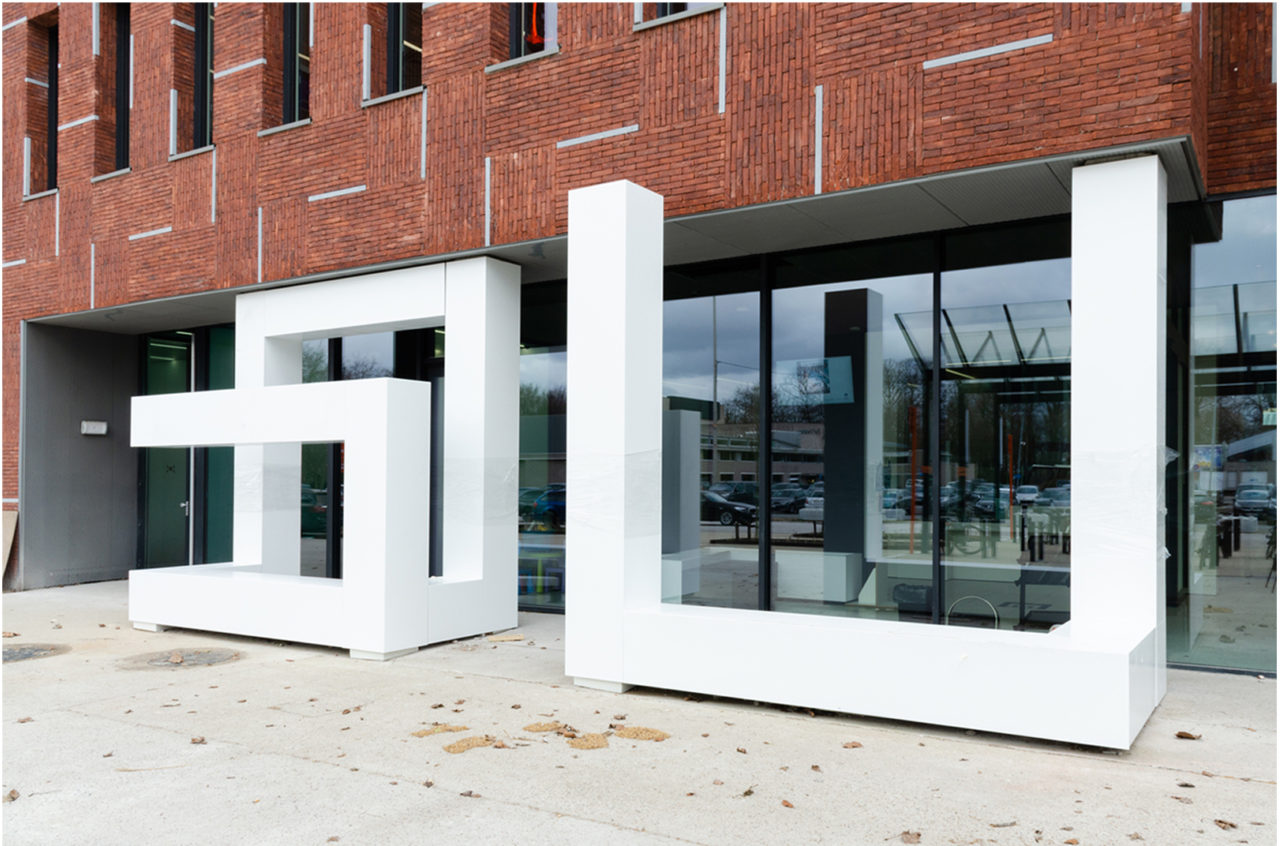
The necessery columns along the facade were also conceved as architectural elements. Reinterpreted columns bend and fold, serving as benches, letterboxes, and ticket column. The shapes refere to works of art by visual artists Sol LeWitt.
ELEMENTS - BRICK SHELL

A brick mantle covers the entire building. The red brick is selected to match the character of the buildings in the area. From the distance, you can see that another material has been mixed with brick, a blue limestone. As one draws nearer to the building, the direction of the bricks and the size of the bluestone, together with the window grid, form a pattern of movement.
ELEMENTS - AWNINGS
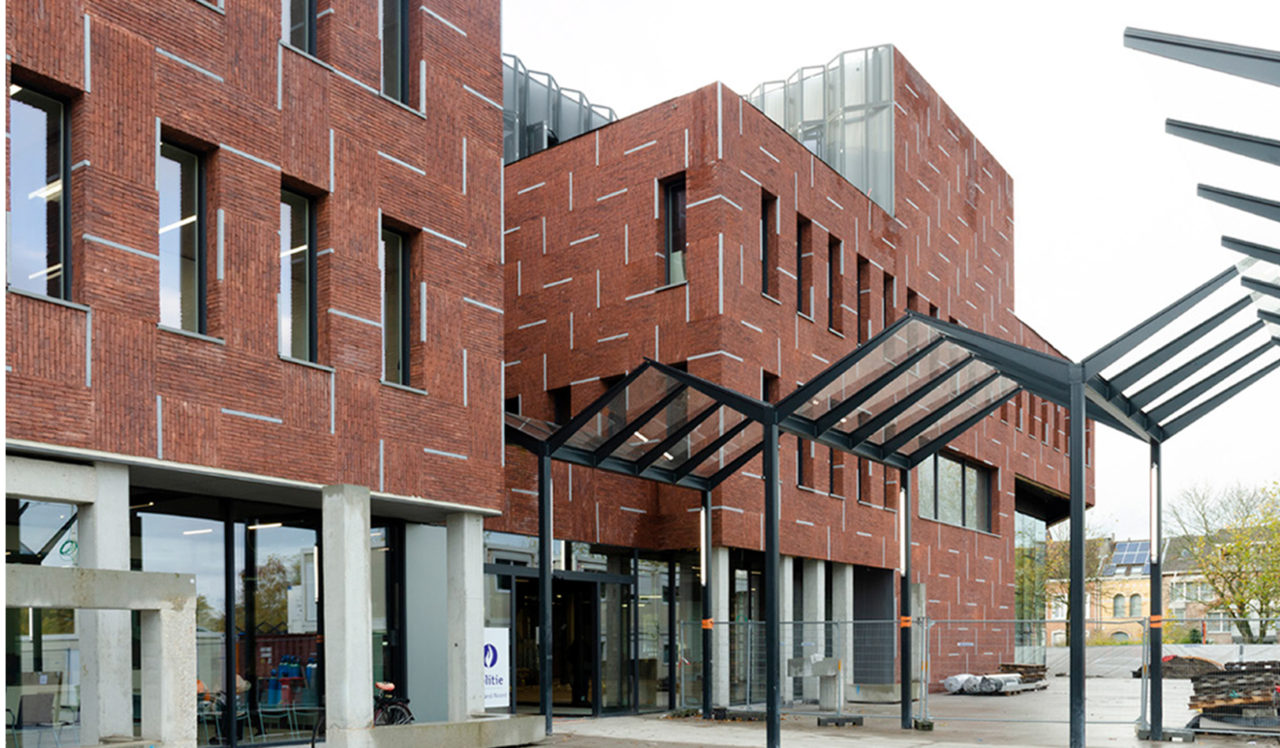
The entrances, bus stop, covered parking spaces, bicycle shed, etc. create external protection in a coherent language. The awnings direct user movement around the building.
Location
Beveren, Belgium
Year
2008 - 2021
Area
19.000 m²
Program
Public Service
Collaborators
SWECO
Mission ORG
Architecture design, Construction
Team
Alexander D’Hooghe, Natalie Seys, Luk Peeters, Birgit Clottens, Sanne Peeters, Rolf Van Der Leeuw, Yoon Young Cho, Ysaline De Lobkowicz, Aaron Weller, Wim François, Ana Rute Costa, Ryan Maliszewski, Theo Issaias, Yen Van Der Voort, Andrew Corrigan, Michiel De Potter, Shirley Shen, Nida Rehman, Scott Ferebee, Adam Galletly, Ellen Raes
Clients
Town of Beveren
Related Updates

ORG in architectura.be article
10.2021
Article
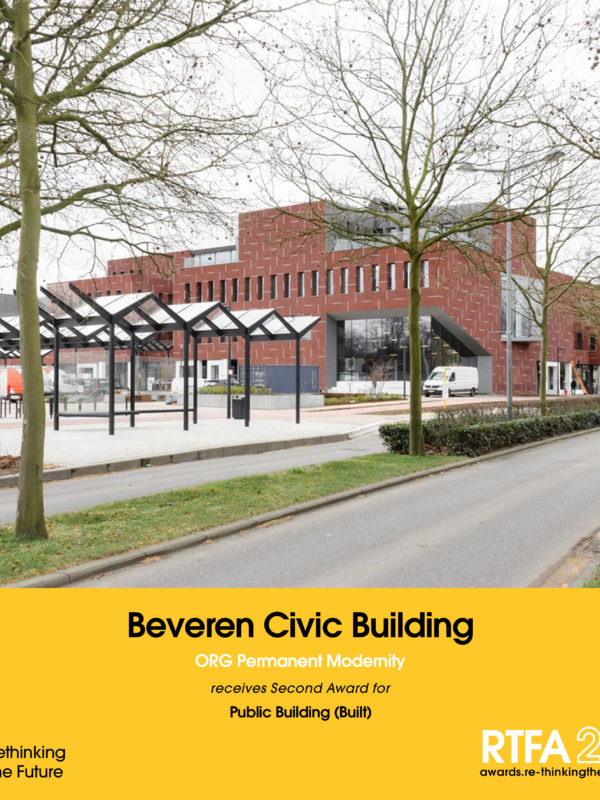
Rethinking The Future Awards 2021 - Second Award - Public Building (Built) - Beveren
04.2021
Awards
